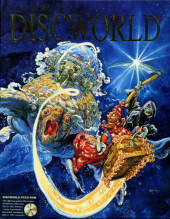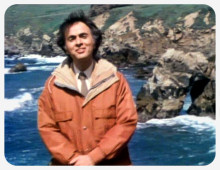 Since the WSH Crew Community was created, I tend to point people for space and science news to it and have not posted much in my social media streams any more. But recently, Google+ had selected my Space & Astronomy Collection as part of the G+ Featured Collections and lots of people started following it, so I started an experiment of re-sharing one news article per day into it. This has had such a good feedback so far even though it was Thanksgiving weekend in the US that I decided to make it a regular feature and collect the linked articles plus a few others at the end of the week into a blog post. Lots of interesting things were happening this week, here are just a few of them. In the future, I will try to share one news article per day from Monday to Friday, a selected video on Saturday and this blog roundup on Sunday. Let’s go!
Since the WSH Crew Community was created, I tend to point people for space and science news to it and have not posted much in my social media streams any more. But recently, Google+ had selected my Space & Astronomy Collection as part of the G+ Featured Collections and lots of people started following it, so I started an experiment of re-sharing one news article per day into it. This has had such a good feedback so far even though it was Thanksgiving weekend in the US that I decided to make it a regular feature and collect the linked articles plus a few others at the end of the week into a blog post. Lots of interesting things were happening this week, here are just a few of them. In the future, I will try to share one news article per day from Monday to Friday, a selected video on Saturday and this blog roundup on Sunday. Let’s go!
Continue reading »
 It’s been over two years since Google had last given its social network Google+ an overhaul and yesterday it happened again with a big announcement… this time, it’s thankfully not a forced switchover, but only an option to try it out and come back to the old layout – so far. This is very good, because there are still a lot of things missing and broken in the new layout, some of which actually may render everything completely unuseable for some people. Like me, unfortunately… although I actually like the new visual style because it is basically an expanded version of what the mobile site has been looking like for some time. The new site centers heavily around Collections and Communities, which is fine… but most everything else has been either removed or put into external services, which is in some parts very problematic. Here are some observations.
It’s been over two years since Google had last given its social network Google+ an overhaul and yesterday it happened again with a big announcement… this time, it’s thankfully not a forced switchover, but only an option to try it out and come back to the old layout – so far. This is very good, because there are still a lot of things missing and broken in the new layout, some of which actually may render everything completely unuseable for some people. Like me, unfortunately… although I actually like the new visual style because it is basically an expanded version of what the mobile site has been looking like for some time. The new site centers heavily around Collections and Communities, which is fine… but most everything else has been either removed or put into external services, which is in some parts very problematic. Here are some observations.
Continue reading »
 A long time ago back in 1995, I accidentially discovered an interesting game package in the computer section of a local department store – it had the simple title DISCWORLD, an intriguing cover illustration and billed itself as an adventure game from the world of a certain Terry Pratchett, of whom I had not heard before. What actually got me to buy the game, though, was the voice cast – Eric Idle of Monty Python fame lending his voice to the main character made this game absolutely irresistible for me and practically an obligatory purchase. Of course, it was through this game I discovered Terry Pratchett in the first place and this beginning could not have been better. While Discworld, the computer adventure, had some minor problems and was not easy to solve, it embodied the quirky style of the author perfectly. Twenty years after its first release, it can rightfully be seen as one of the classic adventure games of the era and at the same time a successful literary adaption. Let’s have another look at it for the 20th anniversary – it’s almost unbelievable that it has already been that long!
A long time ago back in 1995, I accidentially discovered an interesting game package in the computer section of a local department store – it had the simple title DISCWORLD, an intriguing cover illustration and billed itself as an adventure game from the world of a certain Terry Pratchett, of whom I had not heard before. What actually got me to buy the game, though, was the voice cast – Eric Idle of Monty Python fame lending his voice to the main character made this game absolutely irresistible for me and practically an obligatory purchase. Of course, it was through this game I discovered Terry Pratchett in the first place and this beginning could not have been better. While Discworld, the computer adventure, had some minor problems and was not easy to solve, it embodied the quirky style of the author perfectly. Twenty years after its first release, it can rightfully be seen as one of the classic adventure games of the era and at the same time a successful literary adaption. Let’s have another look at it for the 20th anniversary – it’s almost unbelievable that it has already been that long!
Continue reading »
 It’s November 9 again and that means it’s time to almost forget about Carl Sagan Day like almost every year and get reminded by someone on the internet about it. But Carl Sagan’s birthday should be celebrated, especially here in Germany where this day unfortunately has quite a few negative historic connections and it feels like we need to be reminded of something more positive and encouraging. Sagan, who sadly passed away in 1996, has become more popular than ever since last year, when his seminal 1980 science blockbuster documentary Cosmos was re-imagined as Cosmos – A Spacetime Odyssey with Neil deGrasse Tyson, but with Carl still a part of it in spirit. Demystifiying science and invoking a sense of wonder that seems to be all but lost nowadays are still the most important goals every scientist and everyone interested in science should have.
It’s November 9 again and that means it’s time to almost forget about Carl Sagan Day like almost every year and get reminded by someone on the internet about it. But Carl Sagan’s birthday should be celebrated, especially here in Germany where this day unfortunately has quite a few negative historic connections and it feels like we need to be reminded of something more positive and encouraging. Sagan, who sadly passed away in 1996, has become more popular than ever since last year, when his seminal 1980 science blockbuster documentary Cosmos was re-imagined as Cosmos – A Spacetime Odyssey with Neil deGrasse Tyson, but with Carl still a part of it in spirit. Demystifiying science and invoking a sense of wonder that seems to be all but lost nowadays are still the most important goals every scientist and everyone interested in science should have.
In 2013, Ryan Consell from Mad Art Lab and whole group of people who embody the spirit of Carl Sagan created a wonderful crowdsourced reading of his Pale Blue Dot, which I’ve embedded here again this year.
 The history of the space race between the USA and Russia is well documented, but what happened before NASA was founded in 1958 is much less common knowledge. In her new book Breaking the Chains of Gravity, spaceflight historian Amy Shira Teitel takes up the task of telling the story of the early days of what would ultimately launch humanity into space. On her Vintage Space Blog and her Youtube Channel, she has already often talked about this rarely mentioned era, but Breaking the Chains of Gravity is much more than just a simple collection of blog posts.
The history of the space race between the USA and Russia is well documented, but what happened before NASA was founded in 1958 is much less common knowledge. In her new book Breaking the Chains of Gravity, spaceflight historian Amy Shira Teitel takes up the task of telling the story of the early days of what would ultimately launch humanity into space. On her Vintage Space Blog and her Youtube Channel, she has already often talked about this rarely mentioned era, but Breaking the Chains of Gravity is much more than just a simple collection of blog posts.
The books sticks close to the facts, but as the author mentions in her introductory video, this is not a technical reference manual. Instead, it centers around the people behind the technology, the inventors, engineers and even visionaries that have made spaceflight possible. One of the key figures is, of course, Wernher von Braun, but for Amy Shira Teitel telling just his story was not enough and so she went even further back to the hobby rocketeers in the late 1920s Germany around Max Valier, Herman Oberth and their Society for Space Travel. By necessity, the book is also partly a history of World War II, but the author has wisely kept close to the topic and does not dwell too much on the question of war crimes, although the devastation the V2 rockets were capable of does not go unmentioned.
After the end of WWII, the book shifts gears and tells the parallel stories of the German scientists and engineers around Wernher von Braun arriving in the USA and the efforts of the Americans themselves to successfully build rockets both as weapons and for space exploration. This is also the more well-known story of Chuck Yeager, Scott Crossfield and Neil Armstrong flying rocket planes to break the sound barrier and almost reaching space, but the equally harrowing tales of flight surgeons John Paul Stapp self-experimenting with deceleration and David Simmons’ high-altitude balloon flights are mentioned more than just in passing. American politics under President Eisenhower also take up a larger part of the book’s second half, which describes in detail the decisions of the US administration that ultimately led to the creation of NASA.
Amy Shira Teitel’s writing style closely resembles her many blog posts, but here it seems even more refined and improved. While she has chosen to omit technical details, her writing is far from dumbed down and actually full of minute details and facts rarely mentioned anywhere else. The narrative successfully avoids being a dry history lesson and instead conveys the author’s enthusiasm for the subject by being engaging and suspenseful, but at the same time not too emotional. The book has only two negative aspects: it ends in 1957 with the creation of NASA and the Russian spaceflight efforts are hardly mentioned at all – but both are entirely understandable and would have warranted a whole second book… which perhaps may be forthcoming in the future.
Breaking the Chains of Gravity has been released in Europe and Asia on October 22 and will be available in the US on January 22 next year. An audiobook version (sadly not read by the author herself) is already out in the US.
This review also appears in the WSH Crew Community and on the WSH Crew Website.